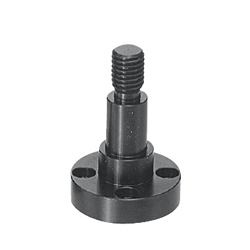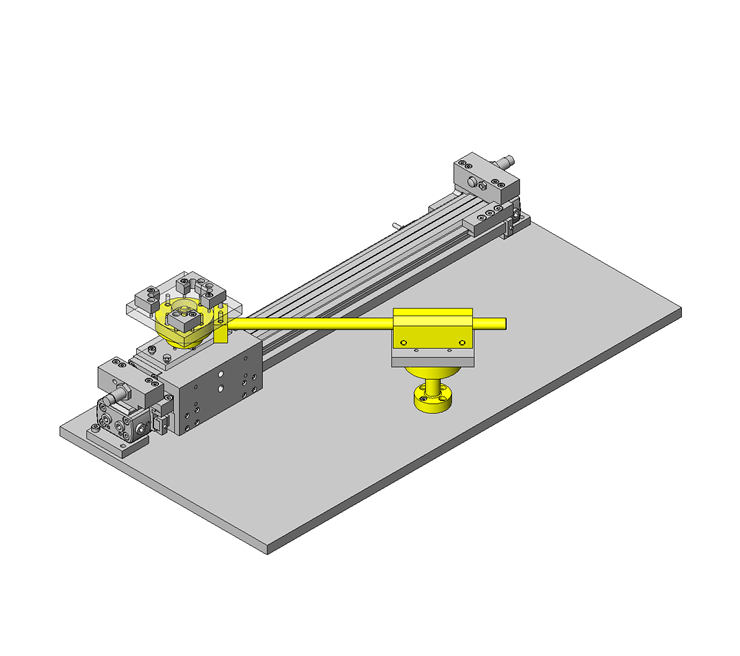(!) Since support from Microsoft will end on January 14 2020, Windows 7 user might not be able to use MISUMI website effectively. Please consider to update your system as ‘MISUMI Website system requirement’.
- inCAD Library Home
- > No.000150 90° Rotational Transfer Mechanism
No.000150 90° Rotational Transfer Mechanism
20
20
Rotate workpiece 90 degrees while transporting.
Relevant category
- * Unit assembly Data consists of some sub-assemblies.
It is configured so that each sub-assembly unit can be used as it is or edited.
Application Overview
Purpose
- Transfer and rotate a workpiece simultaneously.
Target workpiece
- Shape: Connector
- Size: W40 x D40 x H30 mm
- Weight: 150g
Design Specifications
Operating Conditions or Design Requirements
- Horizontal movement stroke: 300mm
- Rotation angle: 90°
- External dimensions: W500 x D250 x H123mm
Required Performance
- Positioning accuracy: ± 0.1/300mm
- Angle: 90° ± 0.05°
Selection Criteria for Main Components
- Ensure that the cylinder with shock absorbing stopper can provide the required positioning accuracy.
Design Evaluation
Verification of main components
- Verify that the cylinder thrust and shock absorber meet the design requirements.
- Conditional values: Friction coefficient of the guide on the rod-less cylinder μ= 0.01, air cylinder efficiency η = 0.82, mass of moving part = 1.6kg, workpiece mass = 150g
- φ 20 cylinder thrust: Fs = 157N at applied pressure of 0.5MPa
- Cylinder thrust necessary to transfer a workpiece F = (0.15 + 1.6) x 0.01 x 9.806/0.82 = 0.21N < 157N = Fs
⇒Sufficiently satisfied.
Check the shock absorber capacity. - Conditional values: Stroke of the shock absorber with these specifications St = 8mm, maximum absorbed energy Ea = 7J, Equivalent mass of the colliding object Me= 18kg [atV = 0.5 m/s]
- Check the absorbable kinetic energy.
E=1/2×m・V2+Fs×St=1/2×(0.15+1.6)×0.52+157×0.008=1.47J
Ea/2=7J/2=3.5>1.47J
⇒One half or less of the maximum absorbable energy. Thus the kinetic energy can be absorbed. - Check the absorbable equivalent mass of the colliding object.
Me=m+2・Fs・St/V2=(0.15+1.6)+2×157×0.008/0.52=6.774kg<Me=18kg
⇒Can be absorbed.
Other Design Consideration
- A cylinder with high mechanical rigidity is selected to meet the high positioning accuracy requirements.
Explore Similar Application Examples
Page
-
/
-
-
Relevant category
-
Relevant category


























































































































































